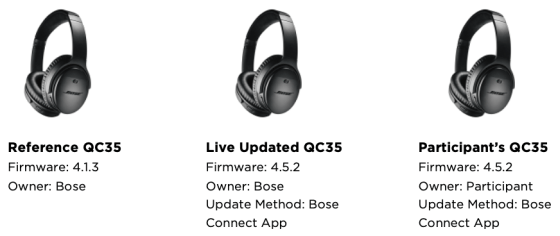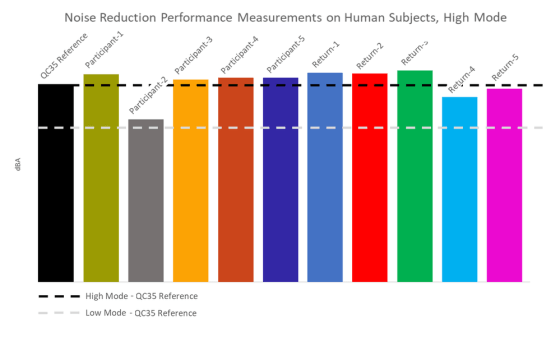What is the action for the bug report of the 'noise canceling function' that shows the integrity of BOSE's customers?

Bose QC 35 Firmware 4.5.2 Noise Cancellation Inves ... --Bose Community --285738
https://community.bose.com/t5/Around-On-Ear-Headphones/Bose-QC-35-Firmware-4-5-2-Noise-Cancellation-Investigation/td-p/285738#anoverview
In 2017, BOSE discovered that there was a noise cancellation issue in QC35 firmware version 1.2.9 and fixed it in version 1.2.10. After updating the firmware, almost no problems were reported, but in 2019, two years later, the noise reduction function problem was reported again in version 4.5.2, which was an upgrade that had nothing to do with the noise reduction function. It is said that it has come to be done. The contents of the report were 'the performance of noise reduction has deteriorated' and 'the strength of noise reduction cannot be adjusted'.
BOSE set up a team of engineers to check the firmware for any changes that could affect the noise reduction feature, and found no such changes. Also, I compared the noise reduction performance between version 4.5.2 and the old version of the firmware, but no difference was found.
BOSE began contacting forum members directly to obtain the QC35 that was reported to be problematic. As a result, we succeeded in obtaining QC35, which is said to have actually caused a problem, although it is a small number. BOSE conducted a detailed inspection, an A / B test with different firmware versions, and an inspector's evaluation of sound quality, but it seems that the problem could not be reproduced or the cause could not be identified.

To solve the problem, BOSE decided to conduct a third party test. We asked the acoustic research institute

Since the cause of the problem could not be identified by the investigation of the company or the research institute, BOSE conducted a questionnaire to the forum and recruited customers who have problems with noise reduction and who would accept the visit to their home. I did. As a result, it was possible to conduct a two-hour survey at the customer's home for the five customers who accepted the visit to their home.
At the customer visit, we heard about how to use the customer's QC35, and BOSE brought in two QC35s, version 4.1.3 and version 4.5.2, and a customer-owned version 4.5.2 QC35, for a total of three units. A / B test with headphones was done. In addition, BOSE exchanged the customer's QC35 for a new QC35 at the end of the customer visit, and brought back the QC35 owned by the customer for detailed hardware analysis.

After a series of customer visits, we found that the customer's firmware update method, Bluetooth pairing method, and unintended noise reduction function mode switching were not performed. Even in the A / B test, no difference in sound quality was observed between the headphones.
After visiting the customer, in addition to the 5 QC35s collected, 5 QC35s were collected from another customer over the phone. As a result of conducting various investigations such as mechanical tests and evaluations by inspectors on a total of 10 QC35s, the performance of the noise reduction function of 2 of the 10 QC35s collected was the normal QC35. Turned out to be lower than.

Examining the QC35 shown in light blue on the graph, we found that the ear pads were not properly fitted. When the ear pads are properly attached, the noise reduction performance is at the same level as the normal QC35.
In addition, the QC35 shown in gray in the graph showed mechanical damage, and it was found that third-party ear pads were used. Third-party ear pads are less airtight than genuine ones and can adversely affect noise reduction. Ultimately, BOSE determined that the performance degradation of the noise reduction feature was due to deterioration of the ear pads, use of third party products, or mechanical damage.

Although it was not possible to identify the cause of the performance degradation of the noise reduction function due to version 4.5.2, BOSE conducted this investigation to find out the headphone usage cases that it did not recognize and how to update the firmware. I heard that I was able to know. These are said to be incorporated as new items in BOSE's research process.
In addition, BOSE will educate the movie about how to maintain headphones, how to install the correct ear pads, and how to use genuine ear pads.
Bose QuietComfort 35 II – Troubleshooting Noise Cancellation Issues --YouTube
No issues have been identified with version 4.5.2, but we also offer the option to downgrade the firmware for a limited time through the Bose Updater .
BOSE commented, 'We take customer feedback seriously and are dedicated to making your QC35 the best product we can make.'
Related Posts:
in Hardware, Posted by darkhorse_log







